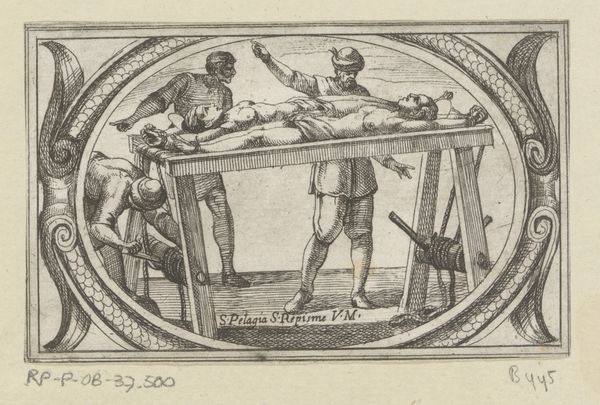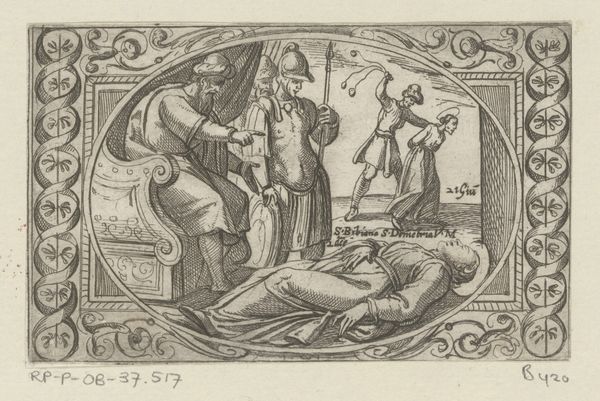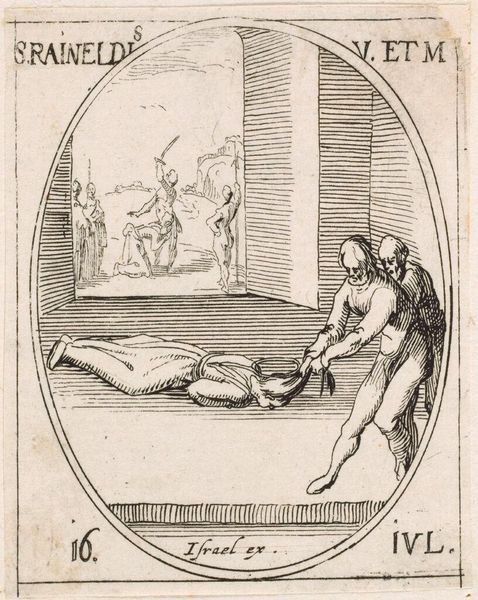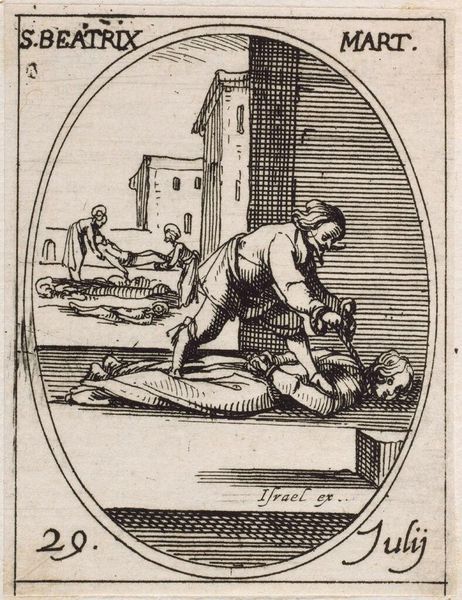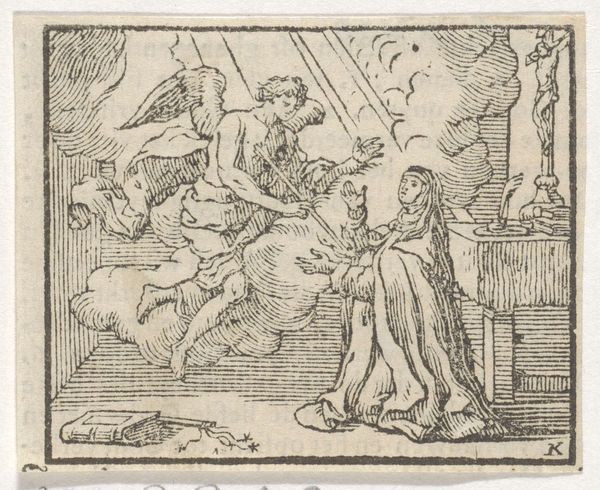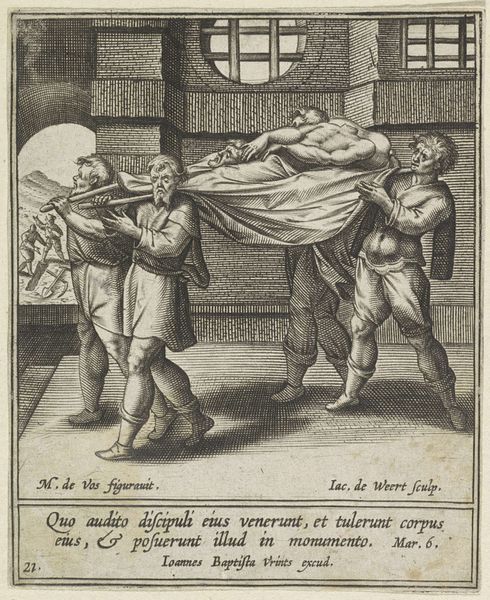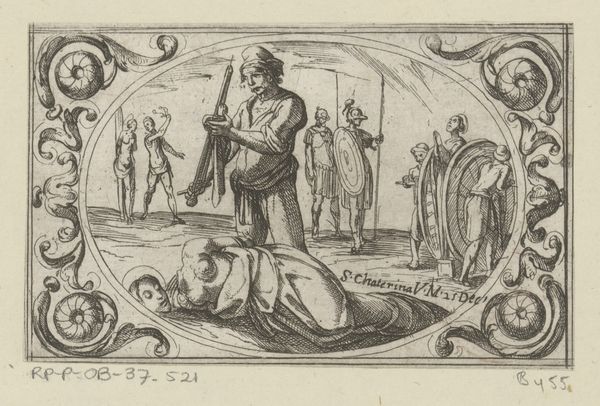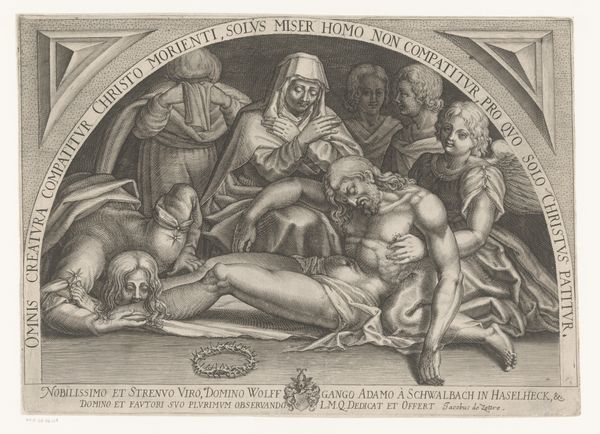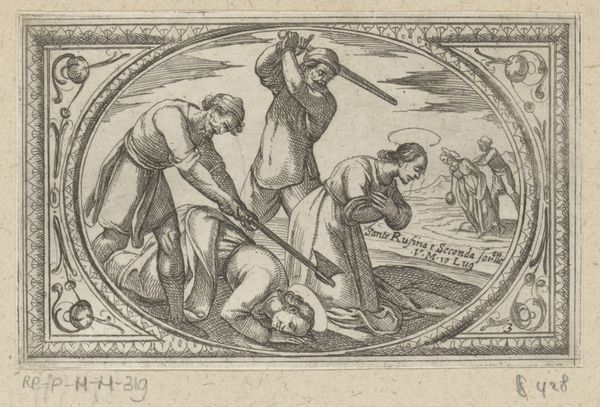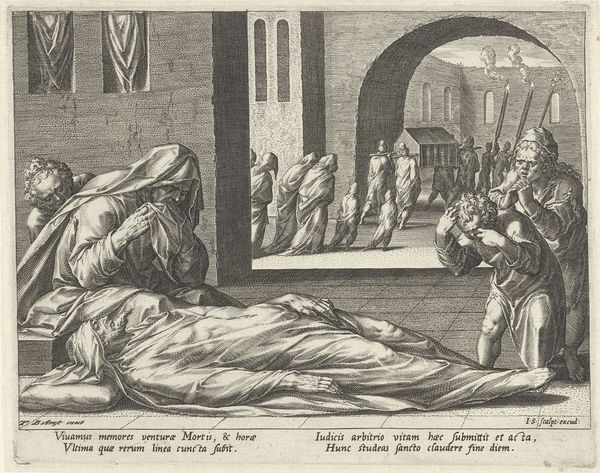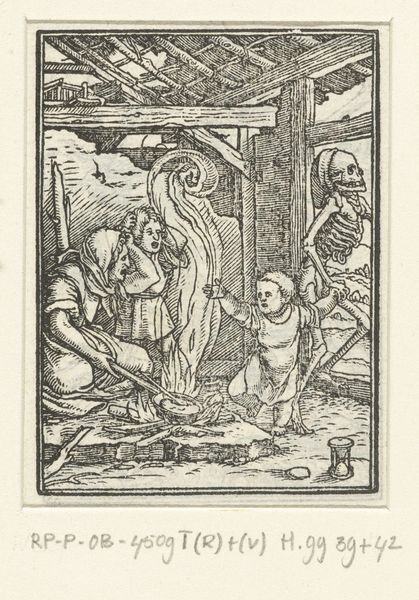
#
comic strip sketch
#
toned paper
#
pen sketch
#
old engraving style
#
sketch book
#
personal sketchbook
#
pen-ink sketch
#
pen work
#
sketchbook drawing
#
sketchbook art
Dimensions: height 73 mm, width 114 mm
Copyright: Rijks Museum: Open Domain
Curator: I’m immediately struck by the violence. It's raw, immediate... theatrical, almost. Editor: Exactly! What we have here is “H. Anastasia” by Antonio Tempesta, created sometime between 1565 and 1630. It's currently held here at the Rijksmuseum. Curator: "H. Anastasia..." I see her. Bound, waiting, haloed and serene, in contrast to the frenzy around her. The linework feels incredibly active, like scratches in the paper that have a purpose, the light flickering across this…scene. You know? I’m curious about what that means. It looks like some sort of religious murder depicted within this tight little frame... Editor: It’s a pen and ink sketch on toned paper. Consider the labour. These lines aren’t impulsive scribbles, but the culmination of highly skilled handwork. Engraving involves laborious actions and specialized knowledge, from preparing the metal plate to understanding the chemical processes involved in etching and the skill in using the burin or etching needle to create the marks which translate image. And the composition, enclosed by that ornate oval…a commodity ready for distribution. Curator: Oh, that's… cold. It’s unsettling how neatly contained it all is, isn’t it? As if suffering is something beautiful and easily digestible and, dare I say…decorative? And the halo seems so slight. Barely any light... I'm trying to understand how much I'm allowed to be drawn to this image that makes the event look ornamental. I almost wonder if she is meant to be consumed rather than revered. It's strange, that feeling of her having this knowing about her fate… almost welcoming, like a sigh… Editor: The distribution of prints like this democratized art but also commodified suffering. Who was this "Tempesta," by the way, and what social forces were driving this imagery? Consider, too, the material reality: paper production relied on exploited labor and natural resources, and the ink itself was a carefully manufactured product. Each line reflects the flow of capital and the structures of power. I do wonder, did he care for Anastasia's story? Or perhaps cared to sell copies? Curator: Yes, it's impossible to forget that these artworks served many purposes. Yet still I return to her quiet acceptance amid the impending brutality, it transcends even the intentions behind its creation. What's clear is that Antonio Tempesta may have been creating this image simply for distribution purposes or financial stability. It’s a story that persists even if just rendered from a pen…on toned paper. Editor: True, art's inherent ability to endure, whether produced under artistic fervor or from mere commission, serves a myriad of meanings, no doubt!
Comments
No comments
Be the first to comment and join the conversation on the ultimate creative platform.

